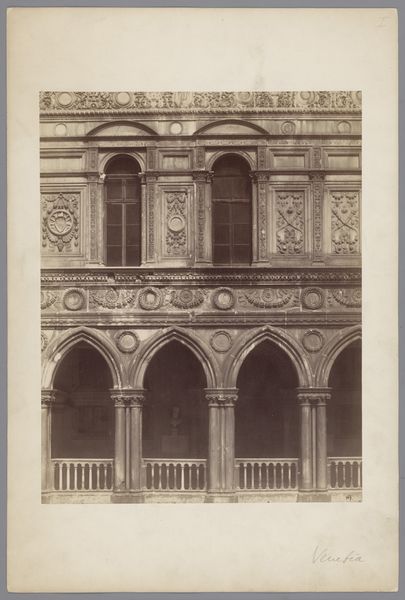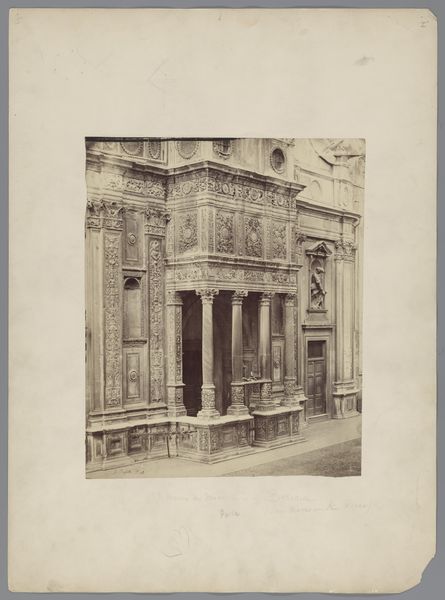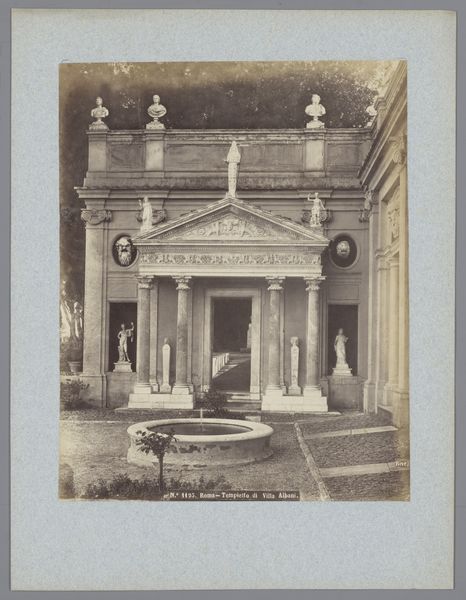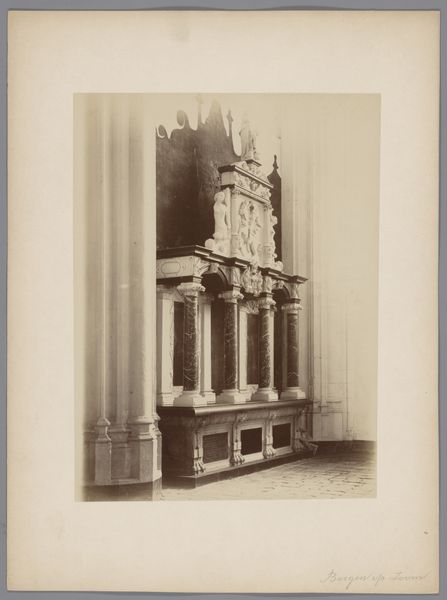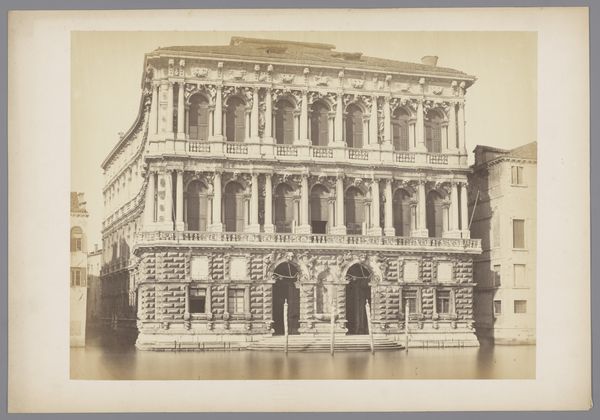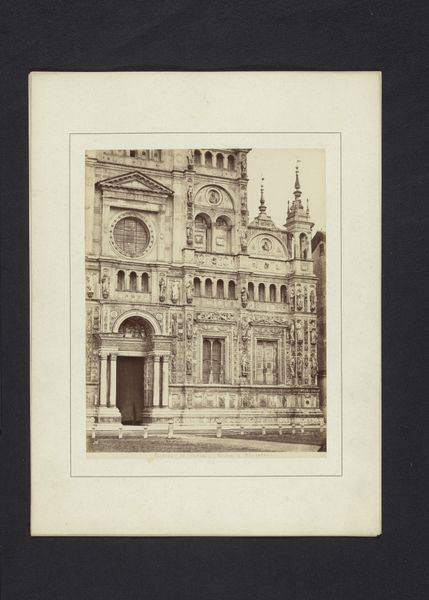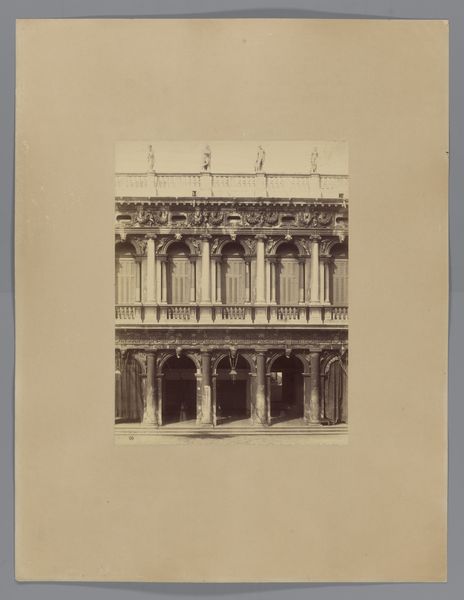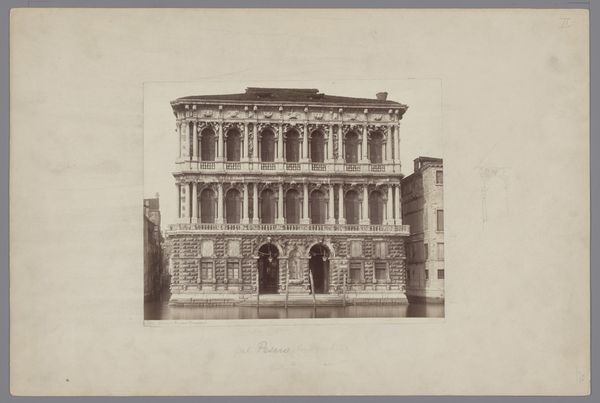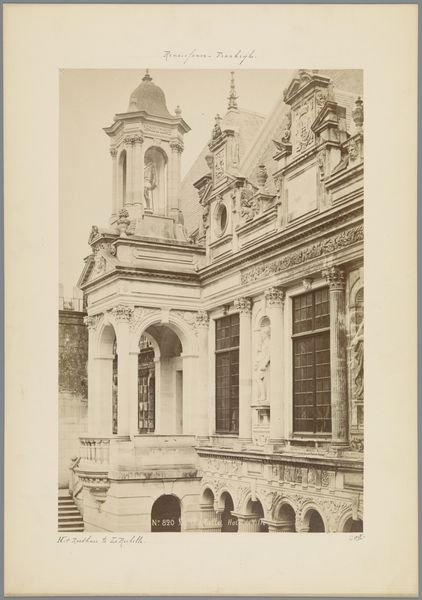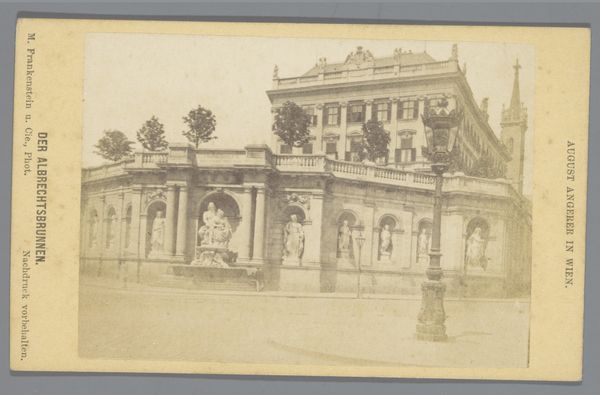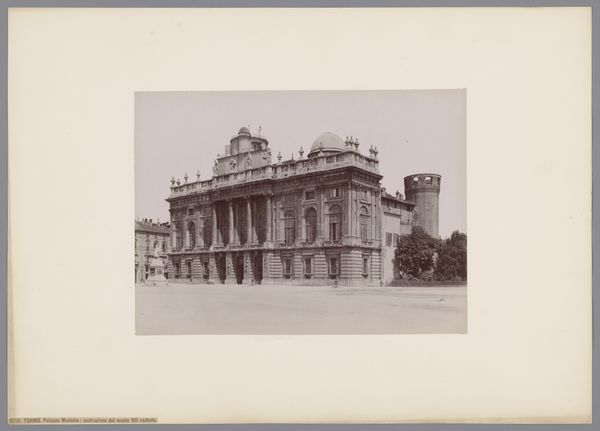
Dimensions: height 325 mm, width 255 mm
Copyright: Rijks Museum: Open Domain
Editor: This photograph, taken by Carlo Ponti between 1852 and 1893, showcases the facade of the Santa Maria di Nazareth church in Venice. The muted sepia tones and the building's strong symmetry give it a formal, almost stoic, feel. What symbolic weight do you think this building, as captured here, would have held? Curator: Consider the setting: Venice, a city built on water, reflecting and refracting light. Churches often symbolize stability, faith, and community. In this image, the architectural grandeur communicates power, but the water...what does the water whisper? Is it a grounding element, or does it amplify the ephemeral nature of earthly things? Do you think that contrast carries a spiritual lesson? Editor: Perhaps the water suggests both Venice's strength and its vulnerability. It makes me consider how physical structures and belief systems both offer us support. Curator: Indeed! The water also acts as a mirror, doubling the church, perhaps symbolizing the relationship between the earthly and divine realms, mirroring and completing each other. And note the repetition of figures – a chorus of saints observing the world. They suggest both collective belief and a legacy across time. What could be a contemporary parallel for representing community so resolutely? Editor: I hadn't thought of the saints as a community witness! Maybe large public murals serve a similar function today? They make values public, even communal. I am curious how viewers over the centuries might read those layers so differently. Curator: And so, the photograph is not merely a representation but a palimpsest, a layering of meaning etched onto a moment in time, to be deciphered and felt across generations. It seems to preserve a desire for order and meaning.
Comments
No comments
Be the first to comment and join the conversation on the ultimate creative platform.
